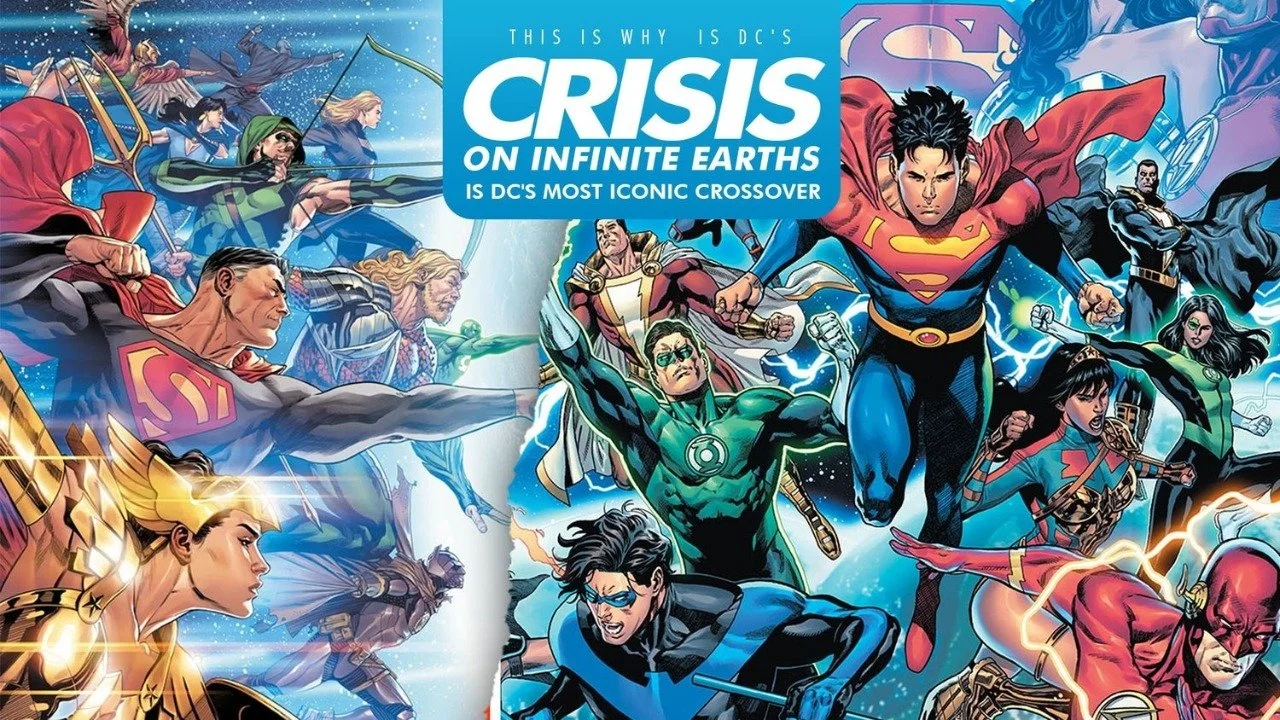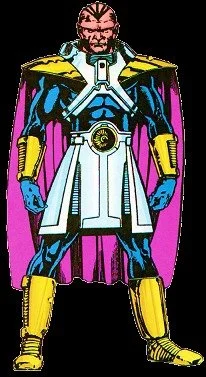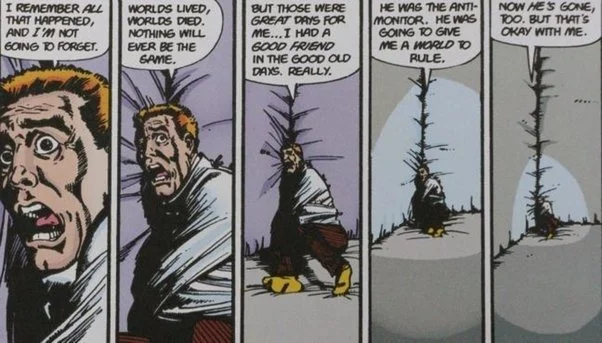This Is Why ‘Crisis On Infinite Earths’ Is DC's Most Iconic Crossover
Crisis on Infinite Earths, written by Marv Wolfman and penciled by George Pérez, brought about several changes to the DC Universe. Characters that had not been a part of the main universe could now interact with DC’s main heroes. It helped set the foundation for many other crossover event comics. Worlds lived, worlds died, and nothing was ever truly the same. What about this story makes it so unique, and what ingrained it into the minds of so many viewers, to the point that the CW’s Arrowverse adapted it back in 2019? Read on and find out.
In 1985, the DC Universe was but one part of a DC Multiverse. The DC Multiverse has changed and evolved over the years, and this is where the first evolution came; Marv Wolfman sought to destroy it. But, feeling it was all too complicated, Wolfman wanted to bring it all down to a manageable level, and in his run on The New Teen Titans, he introduced a character that would serve as the cornerstone of the Crisis and one which was initially to be called the Liberian but has since evolved in other ways, the Monitor. The Monitor was the guardian of the Multiverse. His adversary was the Anti-Monitor, ruler of an Antimatter Universe.
RELATED:
His goal was the destruction of the Multiverse, though he was initially contained after a battle with the Monitor. However, Pariah, a scientist from another Earth, inadvertently woke him up and alerted him to the existence of his Earth. Pariah’s Earth is forced to go by unleashing an antimatter wave and assaulting the Multiverse with his private army of Thunderers and Shadow Demons, but he is saved by the Monitor and sent to the other Earths to warn them.
Meanwhile, the Monitor’s protege, Harbinger, begins gathering Heroes and Villains from across reality. Once gathered, he has them set up five towers to merge the surviving universes to make them stronger. These are Earth-One (the Silver Age DC Heroes), Earth-Two (the Golden Age DC Heroes), Earth-Four (Heroes acquired from Charlton Comics), Earth-S (characters licensed from Fawcett Comics), and Earth-X (Heroes acquired from Quality Comics).
Disaster strikes when a Shadow Demon possesses Harbinger and kills the Monitor… or rather, it would have, had he not anticipated it. Instead, it releases energy, enabling him to protect two of the remaining five piles of Earth by placing them in limbo. The Anti-Monitor recruits the Supervillain Psycho-Pirate, hoping to use his emotion abilities to manipulate the heroes into fighting each other. This fails, enabling the last survivor of Earth-Three, Alexander Luthor Jr., to open a portal into the Antimatter Universe, during which the Anti-Monitor is wounded, his device used to destroy the remaining five Earths is destroyed, and Supergirl gives her life to save Superman.
After a brief attempt by an alliance of supervillains to take over the Earths, the Anti-Monitor returns to destroy them, only for the Flash to sacrifice himself to stop it. Furious, the Anti-Monitor absorbs the energy of the destroyed Earths and travels back in time to alter the creation of the Multiverse, the date when the scientist Krona gazed into the big bang, splitting the universe. Aided by the Spectre, the heroes chase and stop him, during which the Earths finally merge into one, with only those present at the dawn of time remembering the Multiverse.
The Anti-Monitor unleashes one last attack on the heroes, transporting them to his universe to deal with them. A carefully planned counterattack deals with him, as Kal-L (the Earth-Two Superman, note the spelling), Superboy-Prime, and Alexander Luthor Jr. finish him off on a star. Before they can be killed by a star exploding, Luthor transports them all to a pocket dimension, while everyone else but the Psycho-Pirate forgets about the Multiverse.
Crisis on Infinite Earths was an epic that redefined the DC Universe. Characters like Captain Marvel (now Shazam) and the Justice Society of America were integrated into the wider setting, while the history of everything was utterly revamped; even to this day, you can still divide DC continuity into Pre-Crisis and Post-Crisis. Though the various worlds may live again, we can’t deny this story's impact on fans and critics alike.
READ NEXT:
Source(s): Wikipedia, Atop the Fourth Wall




